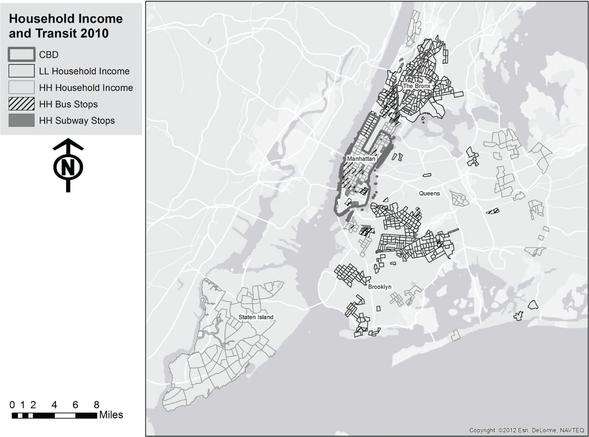Professor questions conventional wisdom that new mass transit options lead to gentrification

A particular idea is often taken for granted in the cultural conversation surrounding demographic shifts in urban centers in the United States: that new mass transit options coming into a neighborhood foreshadow a rise in the area's median income. In other words, once the buses and subways arrive, gentrification is right around the corner.
That's what Joseph Gibbons expected when he first started digging into the income and transit data in New York City.
"I assumed that transit would be associated with wealth based on the idea that transit leads to growth," said Gibbons, a recently hired assistant professor in the sociology department at San Diego State University and researcher in SDSU's Center for Human Dynamics in the Mobile Age.
Gibbons joined the university this summer after earning his Ph.D. in sociology at the State University of New York at Albany and working as a visiting professor at Colgate University.
On the move
Gibbons, along with his colleague Michael S. Barton at Louisiana State University, put the mass-transit-leads-to-higher-income hypothesis to the test by collecting data on changes to the New York City transit system and median income for various neighborhoods according to the U.S. Census for the years between 2000 and 2010.
The income data wasn't hard to come by, but pooling together information on New York City's sprawling mass transit system made for long, hard work. Gibbons and Barton spent hours and hours poring over map archives and recording when and where the city added routes, changed them, or got rid of them entirely.
Gibbons and Barton analyzed the data and discovered that at first blush, the idea that transit options lead to gentrification was supported. Median income did indeed tend to rise in correlation with increased mass transit options. For example, higher incomes tended to cluster around subway stops in Lower Manhattan and in nearby Brooklyn neighborhoods.
Looking deeper
But the researchers' analysis didn't stop there. They also looked at how a number of other demographic factors changed over that same period. What they found was that neighborhoods with declining median incomes tended to have increasing numbers of renters, increasing racial diversity and rapid population growth, whereas rising median income neighborhoods were infused with college graduates and higher marriage rates.
Once they accounted for all of these other demographic factors, the statistical significance of mass transit on media income nearly disappeared. According to their data, these factors are at least as important as transit to a neighborhood's rising income. They published their findings last month in the journal Urban Studies.
"Our results don't mean that transit is irrelevant," Gibbons said. "But it does indicate that there are other factors at play in these neighborhoods that likely have a larger influence. It could be that transit is more a reflection of these other large factors than it is the thing that's driving them."
Narrative nuance
Gibbons said that the study's results reinforced doubts that he's had about the commonly accepted narrative about gentrification.
"Gentrification is something that's very difficult to define and it means something different to different people," he said. "It's more than just the wealthy pushing out the poor. There are a lot of interconnected factors. It's more nuanced than people think."
Now that he's in San Diego, Gibbons is looking forward to studying urban issues in a totally different setting than what he's accustomed to. When he begins teaching urban sociology courses in the fall, he hopes to be able to take students out into the region's neighborhoods to better learn about their character and how they interconnect. He will also be working with other researchers in the Center for Human Dynamics in the Mobile Age to explore how neighborhood demographics affect public health issues.
"From what I've seen so far, San Diego seems kind of like a dual city," Gibbons said. "Walking around neighborhoods like Hillcrest and North Park, it's very urban. It feels like I could be in Queens. But other places like La Jolla feel like their own independent cities. It's very different from the Rust Belt cities I was born and bred in."
Provided by San Diego State University


















